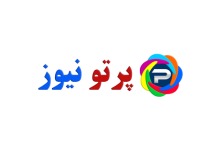The country’s financial and monetary markets do not support production

According to the economic correspondent of Fars News Agency, the budget in the country determines the government’s policies in the next year. On the eve of reviewing the 1401 budget in the Islamic Consultative Assembly, reviewing the dimensions of next year and this year’s budget can solve the current problems of the country’s economy.
Mohammadi, a faculty member and an expert on Iran’s economic issues, believes that the issue of preserving the value of the national currency raised by the Supreme Leader is being linked to inflation. While the real support of our national currency is the national production. We do not realize this at all. That is, production, which should be the principle, has become a marginal issue and has been neglected. The monetary and financial sector of the economy will move away from the real sector of the economy, which is production.
They finance their financial and monetary sector. In other words, money circulates in the capital market and the banking system and generates profits, and this part of the country’s economy is constantly growing. The amount of liquidity in the economy increases, but no share of the accumulated liquidity reaches the production or the real sector of the economy.
In the following, you will read the first part of Fars’s conversation with Mehdi Mohammadi:
Fars: It has been said in many circles that the government has made plans to control the budget deficit, which is the source of inflation. Can this approach reduce inflation?
Mohammadi: The government’s goal is to control the budget deficit to control inflation. The root cause of inflation is the budget deficit or the monetization of the government budget deficit. The government must increase its revenues and reduce its expenses. So the prices are being corrected one after the other and the hidden subsidies are increasing. This price adjustment will not be returned to the people in proportion to the deciles. In the case of a budget deficit, several steps must be taken to resolve it.
* The solution to the problems of the country’s economy is not a contractionary budget
Fars: What is the main problem of Iran’s economy in the current situation and how has this issue been viewed in previous governments?
Mohammadi: With the start of the new government, it was stated that the main issue facing the government is inflation, and this inflation is also due to the increase in demand. The main culprit of this inflation and increase in demand is the government itself because it has a budget deficit and is not disciplined. The government finances this deficit by borrowing from the central bank, which generates a large monetary base. Finally, it is stated that due to sanctions, the government has an income limit and oil money has been sold. برنمید گردد. Because our oil revenues are blocked. So we have to negotiate to solve the issue of sanctions. Then they say the government should resolve the sanctions. Politics must subsidize the economy. So that the government does not compensate for this budget deficit by increasing the monetary base and borrowing from the central bank, the solution is the government’s contractionary fiscal policy. That is, either the government must negotiate or pursue a contractionary policy.
The next issue that arises is the independence of the central bank from the government. They consider the adoption of conventional monetary policies as a basic strategy. The result of such cases, which are raised together, is, first, the reduction of investment and current government expenditures; That is, the government budget becomes small, minimal, and contractionary. Also, the subsidies it pays and government credits must be reduced.
The government has to buy and sell bonds if it has a budget deficit, or if it wants to finance a series of expenses. That means issuing bonds to banks and people this Papers To buy. The next issue is the policy of controlling bank interest rates. Bank interest rates should be raised to solve the problem of inflation. That is to say, the policy of issuing money, which has been mentioned, along with raising bank interest rates, will increase the number of bank accounts and long-term and quasi-money accounts.
* The movement of the monetary and financial sector of the economy is not in line with supporting production
Fars: What economic problems will this method of reasoning that we witnessed in the previous government eventually lead to?
Mohammadi: The consequences of these strategies that have been proposed will, in short, lead to the deepening of the recession and the suppression of the production sector. The name of the production is not heard at all in this content. Hazrat Agha named the year 1400 as support and removal of production. Now we hear about production and is there a way to support production? No. They attach the issue of preserving the value of the national currency raised by the Supreme Leader to inflation. While the real support of our national currency is the national production. We do not realize this at all. That is, production, which should be the principle, has become a marginal issue and has been neglected. Another consequence of this discourse in our society will be the financing of the economy.
The monetary and financial sector of the economy will move away from the real sector of the economy, which is production. They finance their financial and monetary sector. That is, money circulates in the capital market and the banking system and generates profits, and this part of the country’s economy is constantly growing. The amount of liquidity in the economy increases, but no share of the accumulated liquidity reaches the production or the real sector of the economy. The next problem facing Iran’s economy is the issue of increasing stray liquidity. The next issue is the vulnerability of the national economy to crisis monetary and financial shocks of foreign or domestic origin.
* Structural adjustment policies have led to the spread of poverty
Fars: How have the implemented policies been imposed on the society in different periods and in different governments?
Mohammadi: The Supreme Leader says that if there is a wound in our country’s economy, the enemy will focus on it and will damage it in this way and carry out its threat. This is where the wounds of our economy can lead to many threats and damage to the country’s economy. Ultimately, all these problems lead to a decrease in social welfare. The adjustment policies that we have seen in different governments have made all people feel a decline in welfare, and people whose living standards are in the poorer classes have increased year by year and more people have fallen below the poverty line. We witnessed the experience of adjustment policies both in the government of brokers and in November 1998 in the government of Mr. Rouhani in the case of gasoline, and we also saw its problems. These are adjustment policies that have unfortunately been imposed by the International Monetary Fund and the World Bank. These policies are prescribed and proposed to governments with different appearances.
* Implementing some items in the 1400 budget would lead to 80% inflation
Fars: According to the budget of 1400, the government should have taken measures during the price reforms, but did not take any action. To what extent have these measures affected inflation?
Mohammadi: According to the Statistics Center, the average annual inflation leading to December is 42.4%. If the currency of 4200 Tomans was canceled, how much inflation would there be? Some say 17% and some say 40%. The Parliamentary Research Center has announced 8% real and 2.5% expected inflation. Revenue from this price correction has increased from 1,500 billion tomans to 94,000 billion tomans. That is, it has grown by 6166%; Of course, the government corrected this issue.
Inflation in this price correction has been at least 5%. The electricity price reform, which was supposed to be implemented according to the 1400 budget law, will also have 5% inflation. The previous government did not implement this legal obligation and the thirteenth government was forced to implement it. Consider also abolishing the sugar exemption from VAT. This will also cause at least 2% inflation. Interestingly, the principle of gold is exempt from VAT.
Doesn’t the government have a budget deficit? Why was gold exempt from tax? The next discussion is to increase freight rates from 4 to 9 percent. This issue is also at least 5% inflation بهای Adds finished goods. Changing the base currency for customs duties from 4200 Tomans will also have a 10% inflation for the country. The sum of all these values leads to an 80% increase in inflation.
* Iran’s sick economy needs surgery
Fars: In your opinion, with the price reforms of the 1400 budget, which have not been fully implemented, how much inflation should have been imposed on the country, so that the government could finance part of its expenditures?
Mohammadi: Iran’s economy is in a state of disease from which blood has flowed and needs blood. When you experience inflation or price correction, it means that you have not operated on the economy properly. Surgery that leads to swelling EndogenousBusinesses, consumers, households and producers are in trouble, and all economic actors need more money to have the same amount of consumption and production as before.
In this case, you are proposing a contractionary budget called the 1401 budget bill. The problem is, friends say the budget is expansionary. We seem to have a 40% contraction in the budget. Regarding the 1401 budget, compared to the first ceiling of the 1400 budget bill, according to the Parliamentary Research Center, our budget has grown by 46%. 43.4% of inflation is announced by the Statistics Center. Because this 46 percent budget growth is greater than 43.4 percent inflation growth, so our budget is expansionary.
Let me give you an example; The amount of acquisition of financial assets in 1400 has increased from 92 thousand billion tomans to 155 thousand billion tomans in 1401. 63,000 billion tomans The amount of acquisition of financial assets or settlement of accounts that the government has made to borrow from people or banks has increased. As a result, government spending has fallen by 63 percent. 1372 Hemmat, which is the expenses and resources of the public budget in 1401. If we reduce this number from the ceiling of expenditures and resources, the budget growth is less than 40%. That is, the contractionary budget is closed. In such a situation that this economy is sick, which needs liquidity and credit, what harm will we do to the country’s economy with this action? On the other hand, compensation for government employees has increased by an average of 10%. It has increased by an average of 10%. 8 to 28 percent is said. In total, compensation for government employees’ services has increased by 10 percent. That is, when we have 80% inflation, we reduce their real purchasing power by 70%.
* The liquidity contradiction that exists in the Iranian economy
Fars: You mean the prescriptions that some economists make about controlling inflation will not work?
Mohammadi: This means that people can not demand according to inflation as before. It is said that companies have 4 times the global average of their storage volume and inventory in GDP. Perhaps one of the reasons is that there are no applicants. We have reduced the purchasing power of consumers. Therefore, the consumer and the household do not have the money to demand. They do not have money that has the same demand as before in line with inflation. The next point is that when we instruct the government that the problem is inflation and you should not have a budget deficit to solve inflation, we are practically saying that you are supposed to be disciplined and you should not borrow from the central bank. You will have an overdraft penalty. This overdraft penalty rate will be increased by this contractionary fiscal policy. These price corrections have two effects. One is that producer costs and expenses are high and require more working capital. This is a real need.
We have 4,200,000 billion tomans of liquidity. How much of this liquidity has been generated? Where does this liquidity inconsistency in our economy come from? We must stand against these misconceptions that are fed to the country’s policymakers and decision-makers. Cost pressures are said to have increased, leading to the need for working capital for the manufacturing firm. The producer must either raise the price or receive more facilities from the banking system. We tell the government, if you have a deficit, to issue bonds and finance yourself from the banks.
Banks can not afford the facilities they granted, بازپس To take. On the one hand, the volume of demand decreases, and on the other hand, the producer can not produce enough, and again the price and the pressure of spending on the whole society increase. So the facility he has already received will be defaulted. On the other hand, new people who want to get facilities will also face the problem of repayment.
* The recession in the economy leads to overdrafts of banks
Fars: What problems has this issue created for the banks and ultimately the country’s economy?
Mohammadi: The recession created in the national economy along with inflation has not led to the settlement of facilities, and in the asset column of the banks’ balance sheets, the amount of facilities that have been paid shows itself as doubtful receivables. Banks are forced to attract new deposits to settle with previous depositors. In such a situation as far as it goes for the banksEconomy, Ie less than the interbank market interest rate or the new overdraft rate, will be willing to pay interest to new depositors. Profit that is created without support and is not real. In other words, quasi-money is growing rapidly in the Iranian economy. At the same time, the imbalance of banks is increasing.
end of Message/

